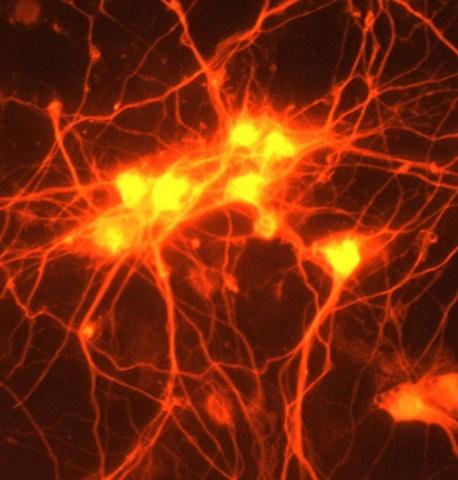
What do analyses of stroke rehabilitation techniques, new therapeutic targets for jaw pain, and guidelines to help sleep apnea patients cope with runny noses have in common? They’re all subjects of articles published by members of the Duke Neurology Department this April. Read the summaries below to learn more about the nine peer-reviewed journal articles members of the Duke Neurology Department contributed to over the past 30 days, and find links to the original research below.
Epilepsy, Sleep, and Clinical Neurophysiology
- While runny or stuffed noses are an irritation to everyone, they can be an especial problem for sleep apnea patients. Andrew Spector, MD, was the senior author of a new study that examines different nasal and sinus diseases that affect this condition, focusing on relevant medications and treatments to manage this comorbidity. Read that article in the Journal of Clinical Sleep Medicine.
General and Community Neurology
- The corpus callosum is a vulnerable location of concussion-related white matter damage that can be associated with short- and long-term effects of concussion. Thomas Farrer, PhD, contributed to a new longitudinal study that examined the effects of interhemispheric transfer time on concussion symptoms in adolescents. Read what they found in Frontiers in Human Neuroscience.
Neuromuscular Disease
- Neuromuscular ultrasound has become an integral part of the diagnostic workup of neuromuscular disorders at many centers. Unfortunately, uniform standard scanning techniques do not currently exist for this technique. Lisa Hobson-Webb, MD, was part of an expert panel offering a set of protocols to serve as references for clinicians and researchers. Read those protocols in Muscle and Nerve.
Neurocritical Care
- A new literature review provides a concise summary of knowledge and practice for the diagnosis and initial management of unanticipated adult patient disorders of consciousness aimed at general intensivists. Cherylee Chang, MD, was the first author of this study, which appears in Critical Care Medicine. Read it here.
Parkinson’s Disease and Movement Disorders
- Recent years have seen growing interest in neuropalliative care as a subspecialty. Sneha Mantri, MD, MS, was the senior author of a new commentary in Neurology Today that examines how narrative medicine -- the stories that patients, care partners, and providers tell themselves about their medical experiences -- can help reduce patient distress and complement this form of care. Read that article here.
Stroke and Vascular Neurology
- Transcranial direct current stimulation (tDCS) is a promising clinical adjunct therapy with potential to improve for stroke rehabilitation, but responses to this therapy vary widely among patients. Wuwei “Wayne” Feng, MD, MS, contributed to a new review article providing a comprehensive summary and timeline of the development of tDCS for stroke, examining both human and animal research on the subject as well as the potential for neuroimaging to provide personalized results. Read that article in the Journal of Clinical Medicine.
- Wuwei “Wayne” Feng, MD, MS, was also part of a team that examined the impact of brain age on post-stroke outcomes, with a focus on sensorimotor performance. The cross-sectional observational study of 963 patients found greater lesion damage was associated with older brain age which in turn was associated with poorer outcomes. Read the full study in Neurology.
- Tobacco smokers who have had a stroke benefit as much as non-smokers from clopidogrel on reducing their risk of subsequent ischemic stroke as well as their risk of major hemorrhage, a new article from the European Stroke Journal has found. Brian Mac Grory, MB BCh, MRCP, contributed to the study, which is available here.
Translational Brain Sciences
- Yong Chen, PhD, and Peng Wang, MS were the senior authors of a new Frontiers in Molecular Neuroscience article which describes a potential path for therapy for temporomandibular disorder (TMD) pain. The team found that TMEM100, a two-transmembrane protein and a regulator of TRPV1-TRPA1 interaction, contributes to TMD pain, making it a potential novel target of interest. Qiaojuan Zhang, PhD, Fabiana Dias, PhD, and Abbie Suttle, MS, also contributed to the article. Read it here.